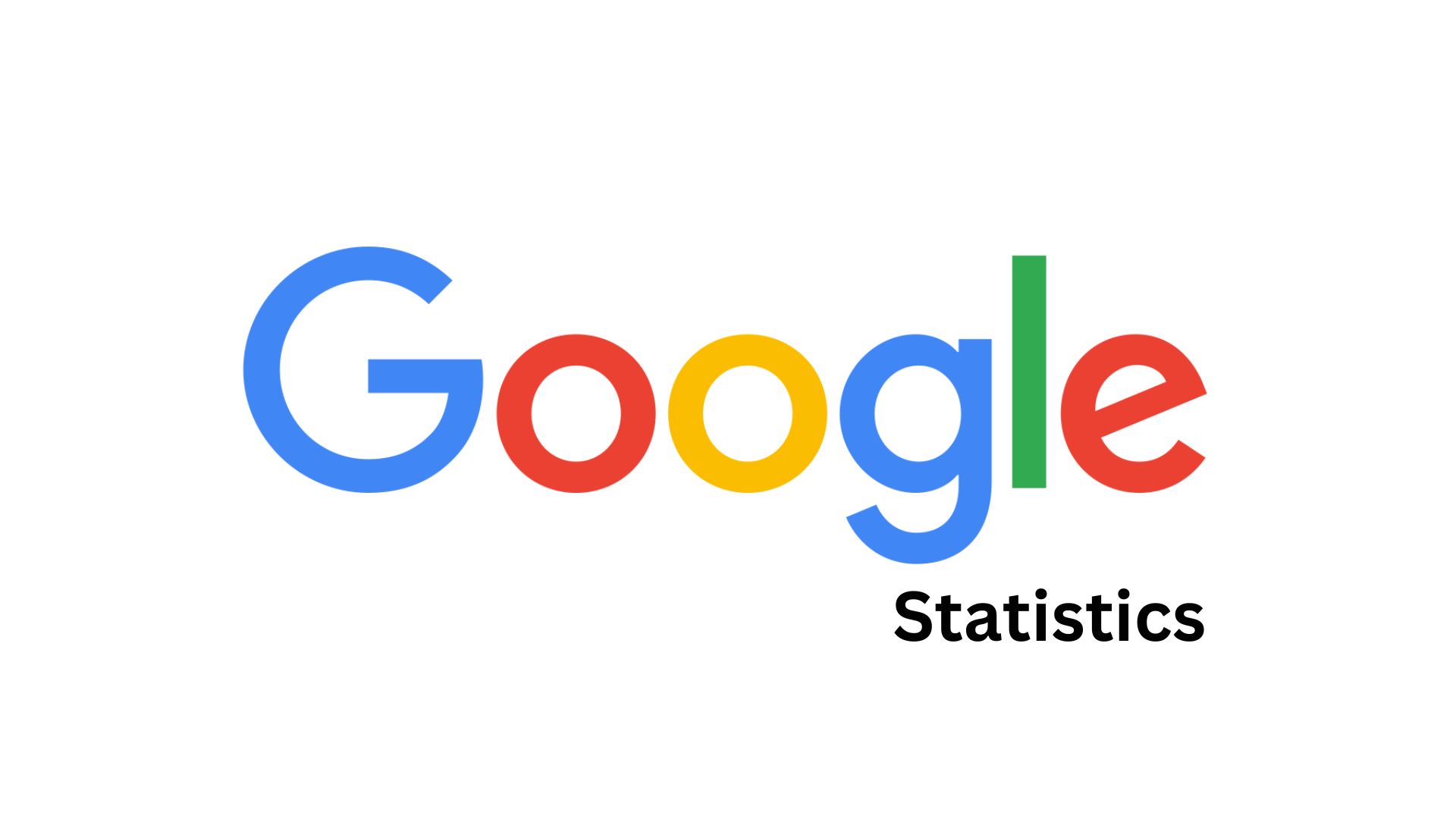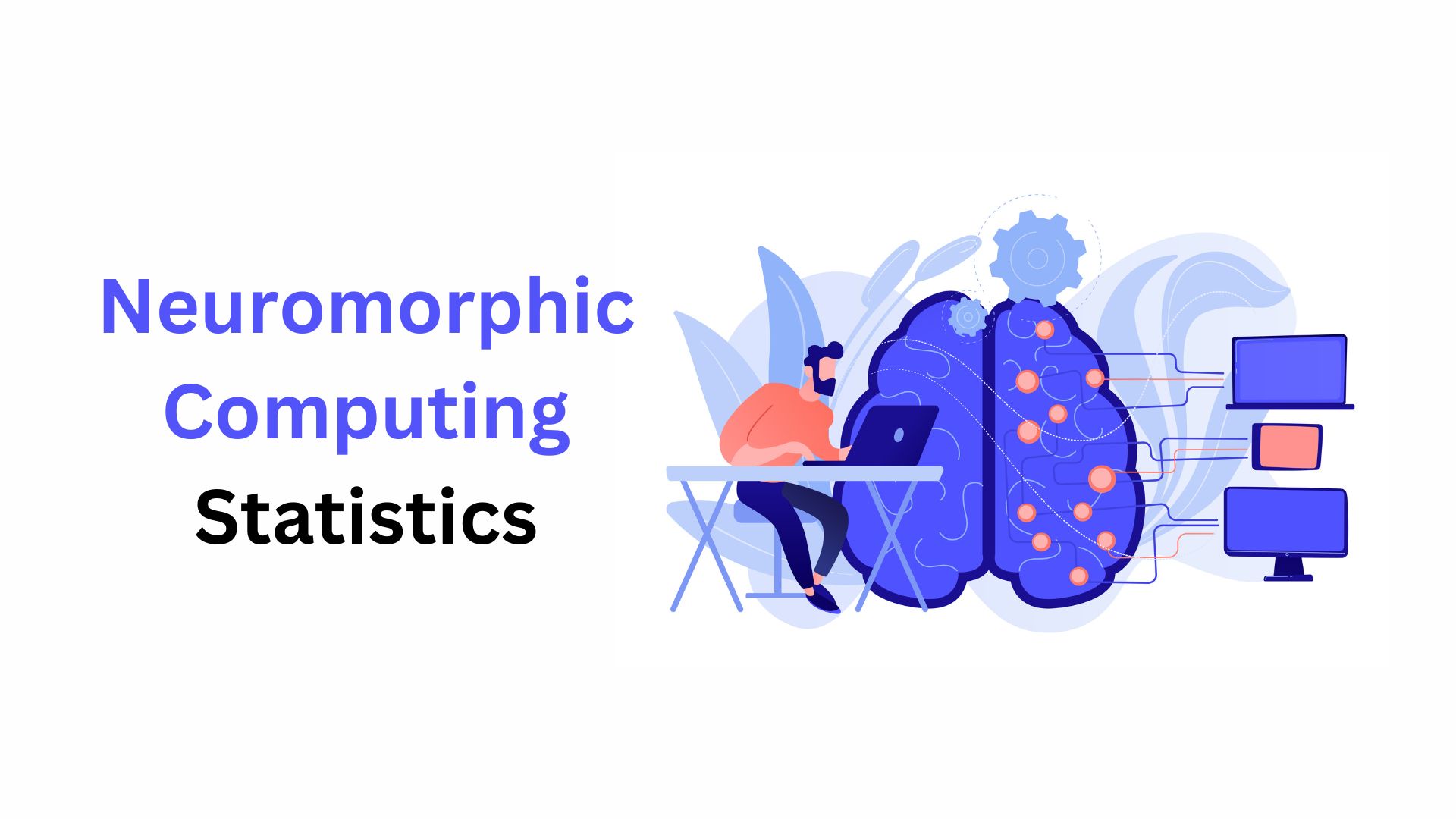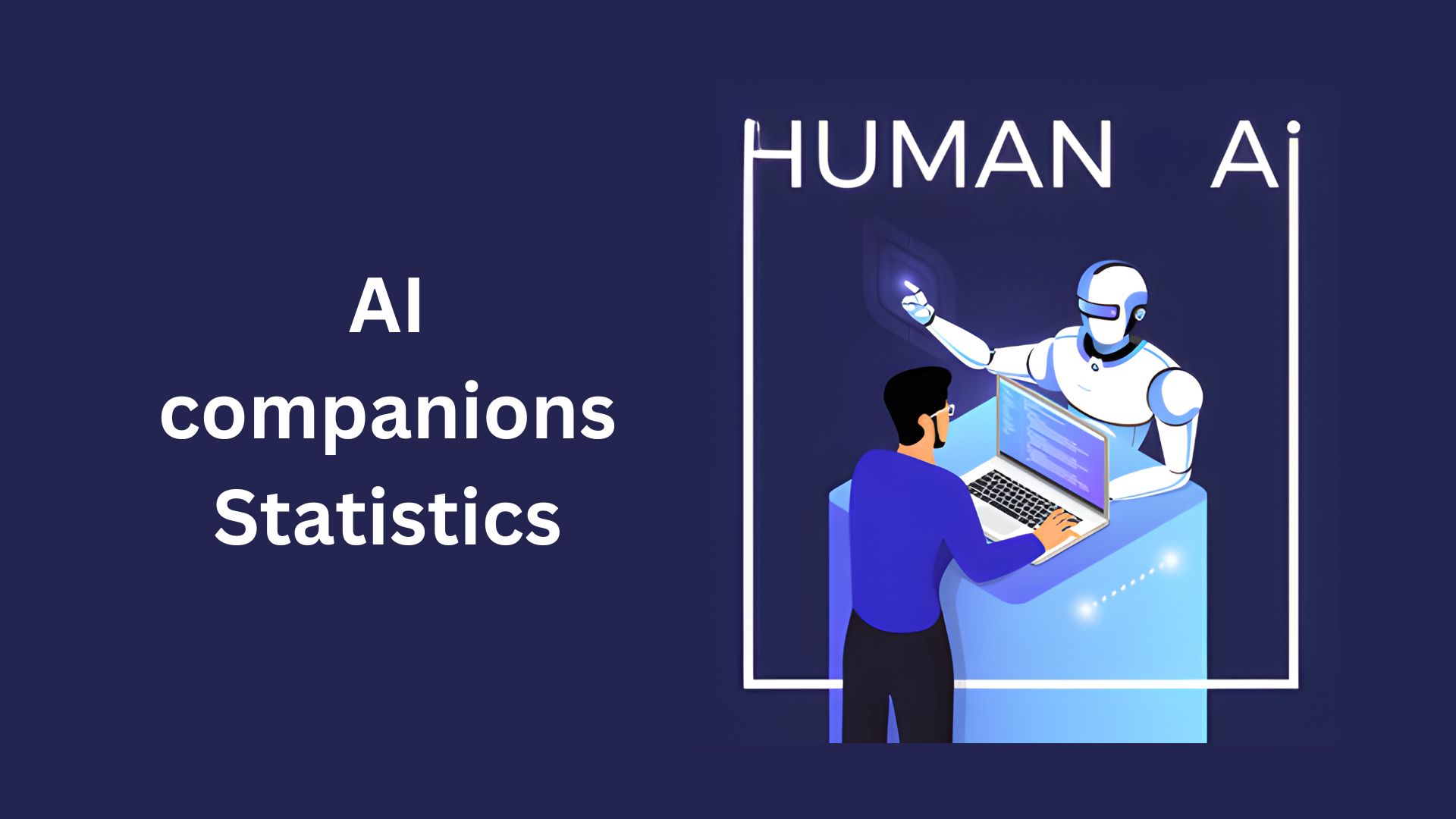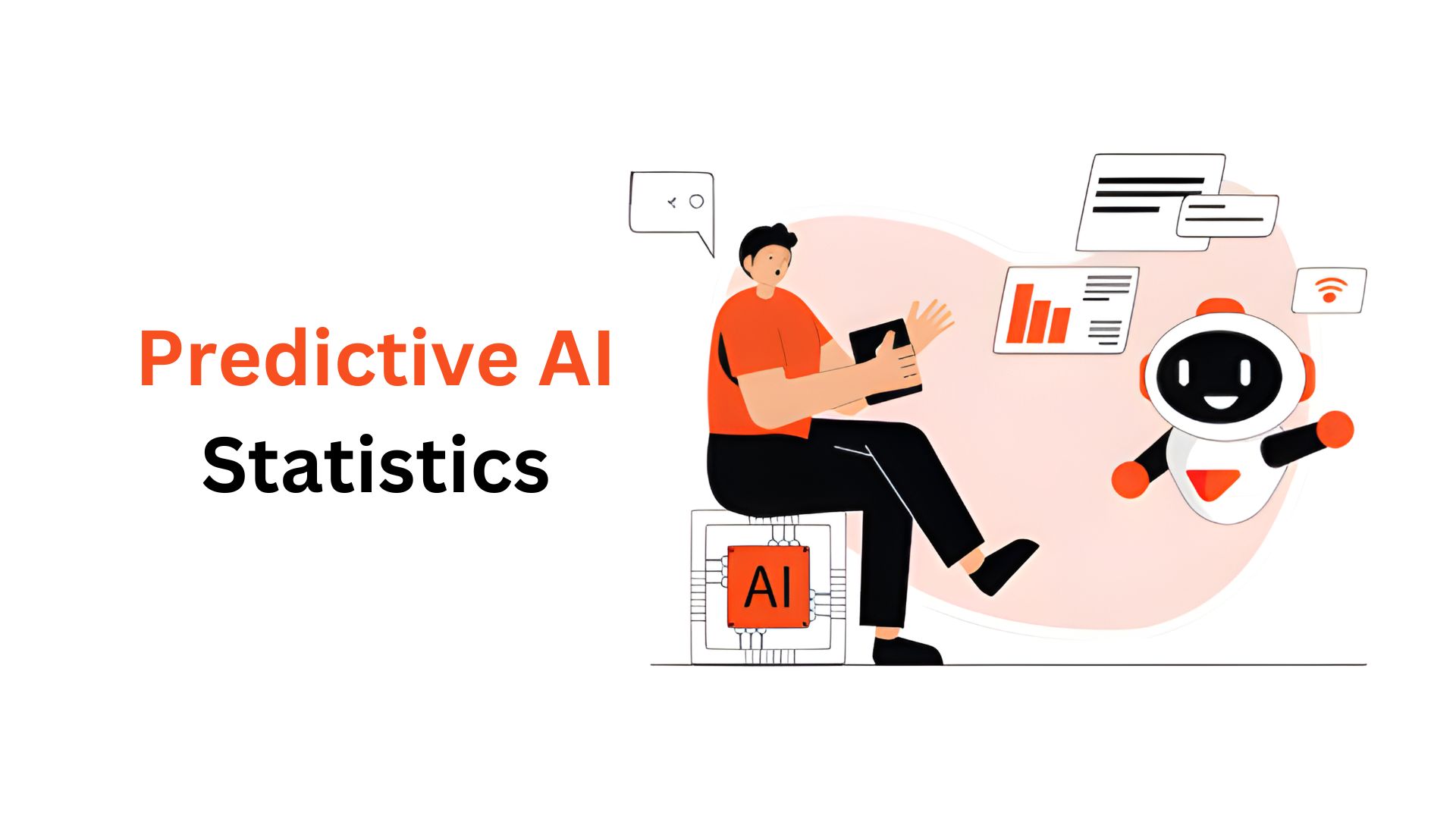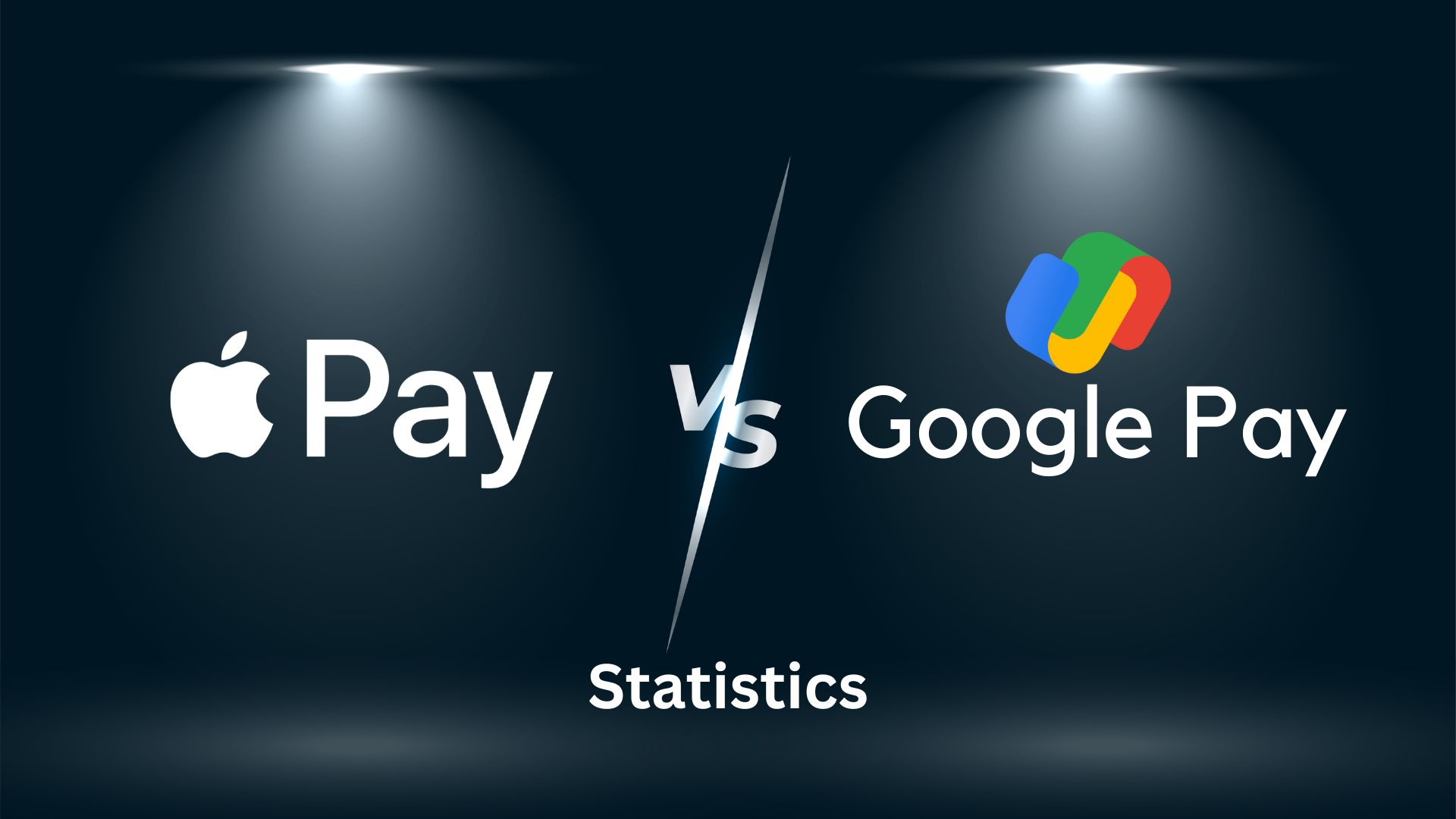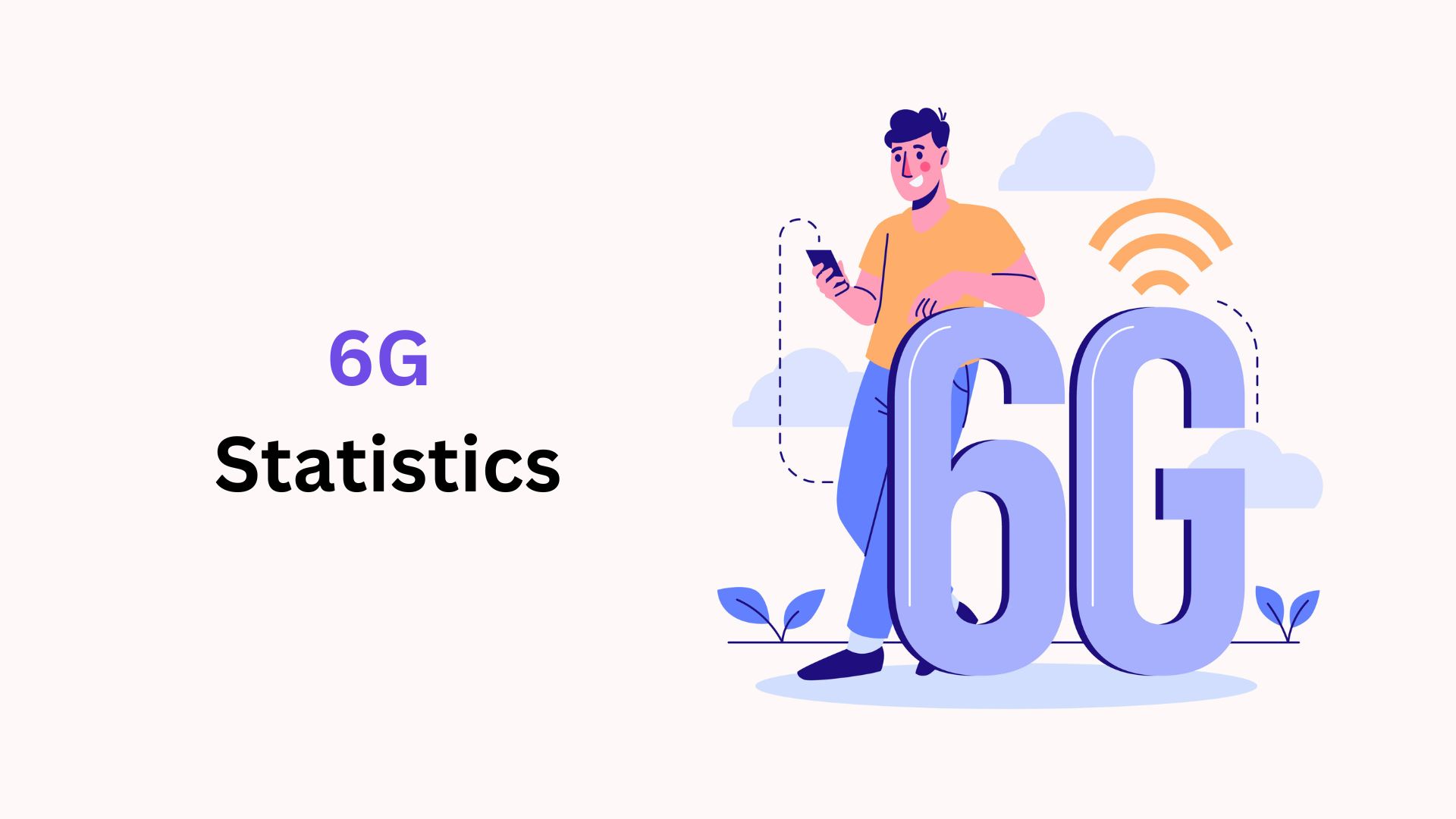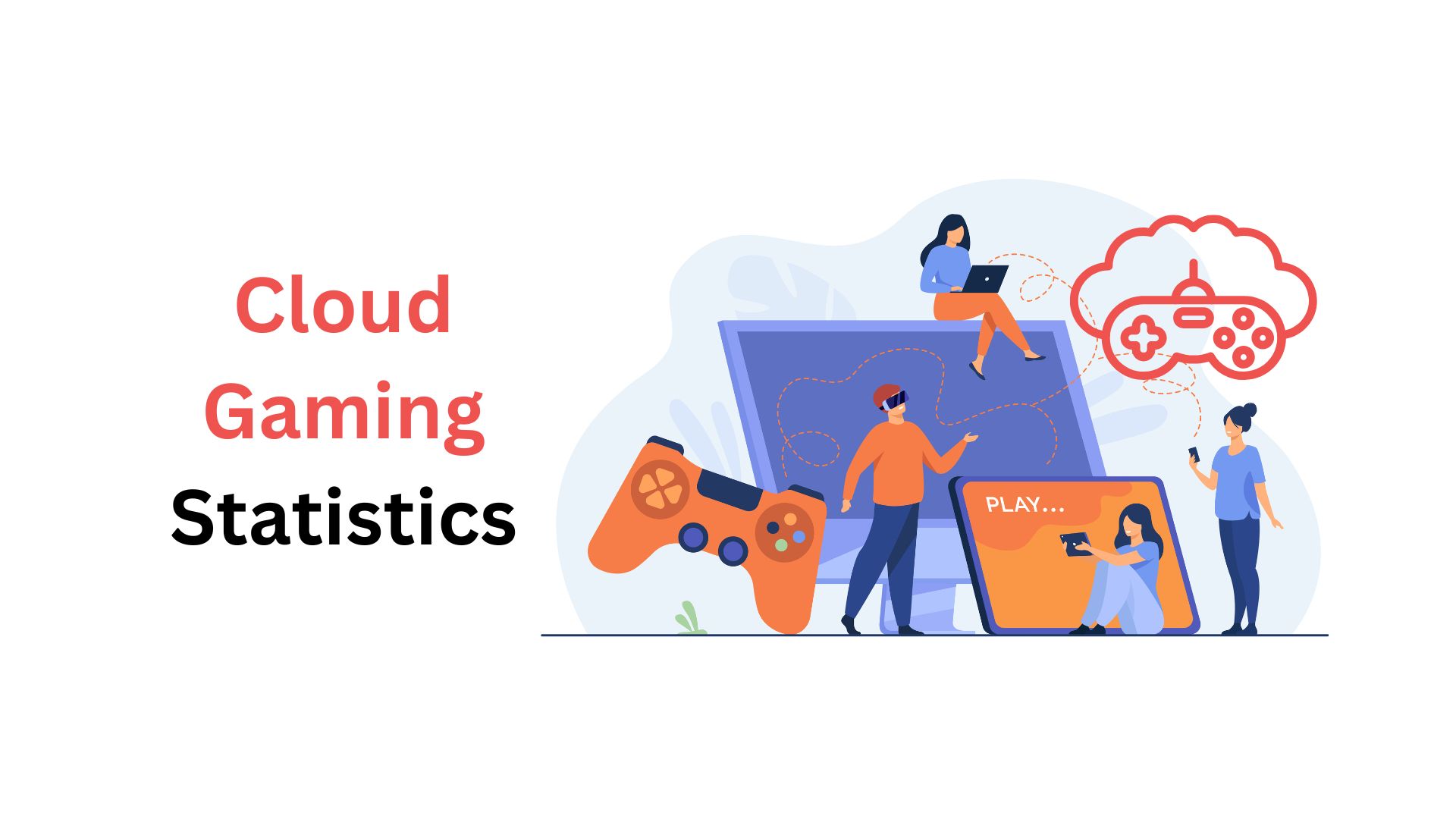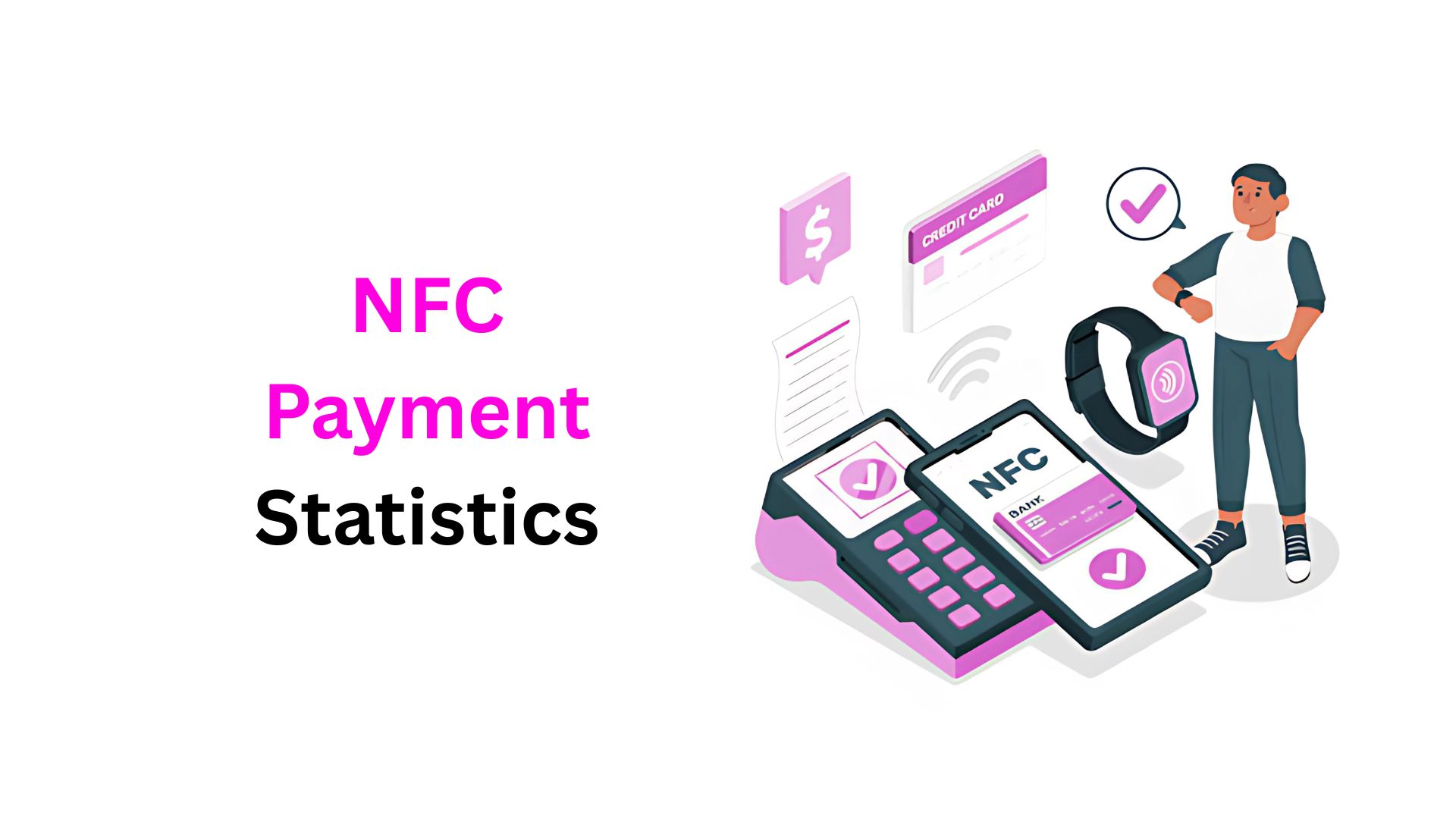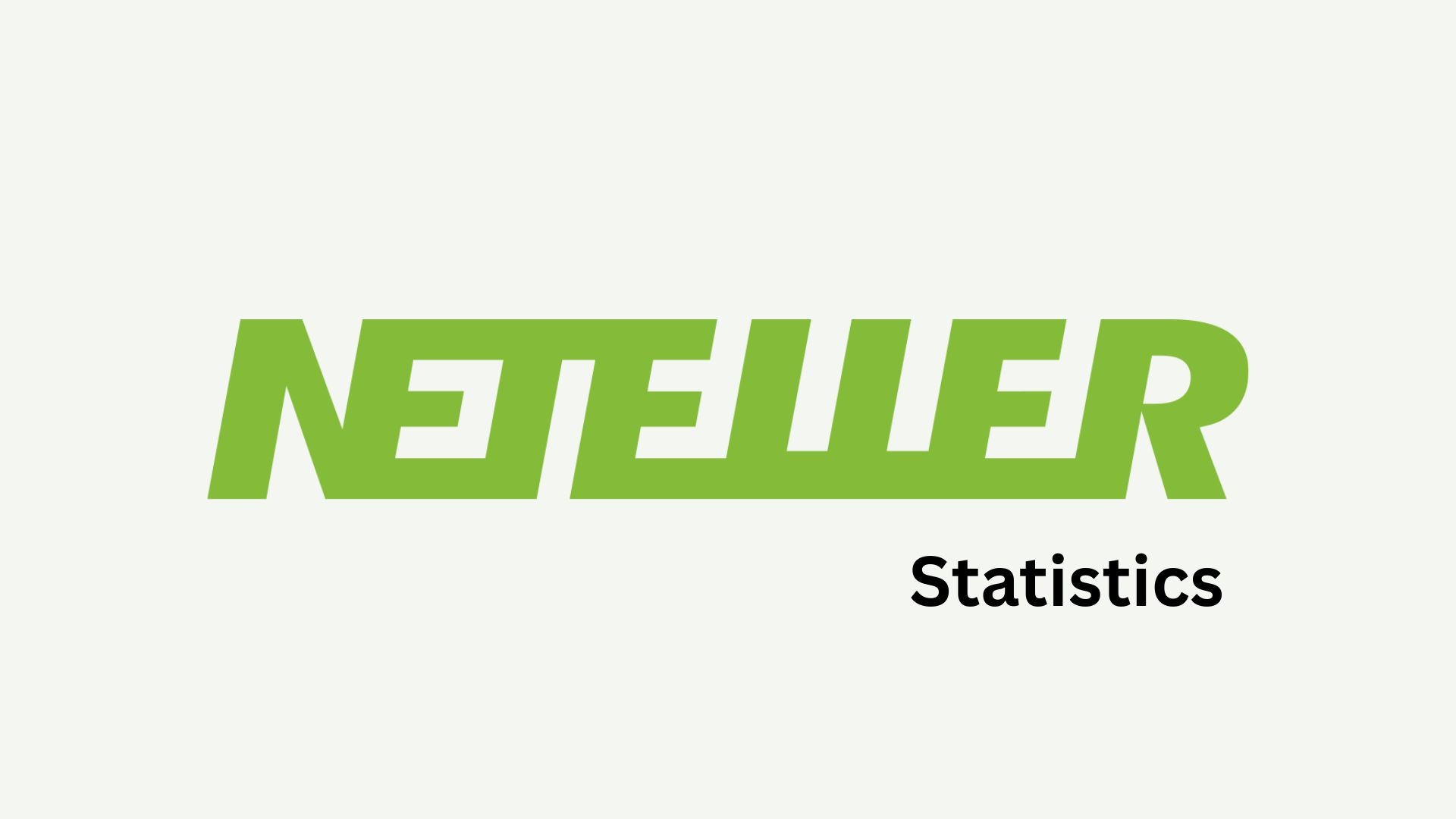Google Fit Statistics And Facts (2025)
Updated · Mar 20, 2025
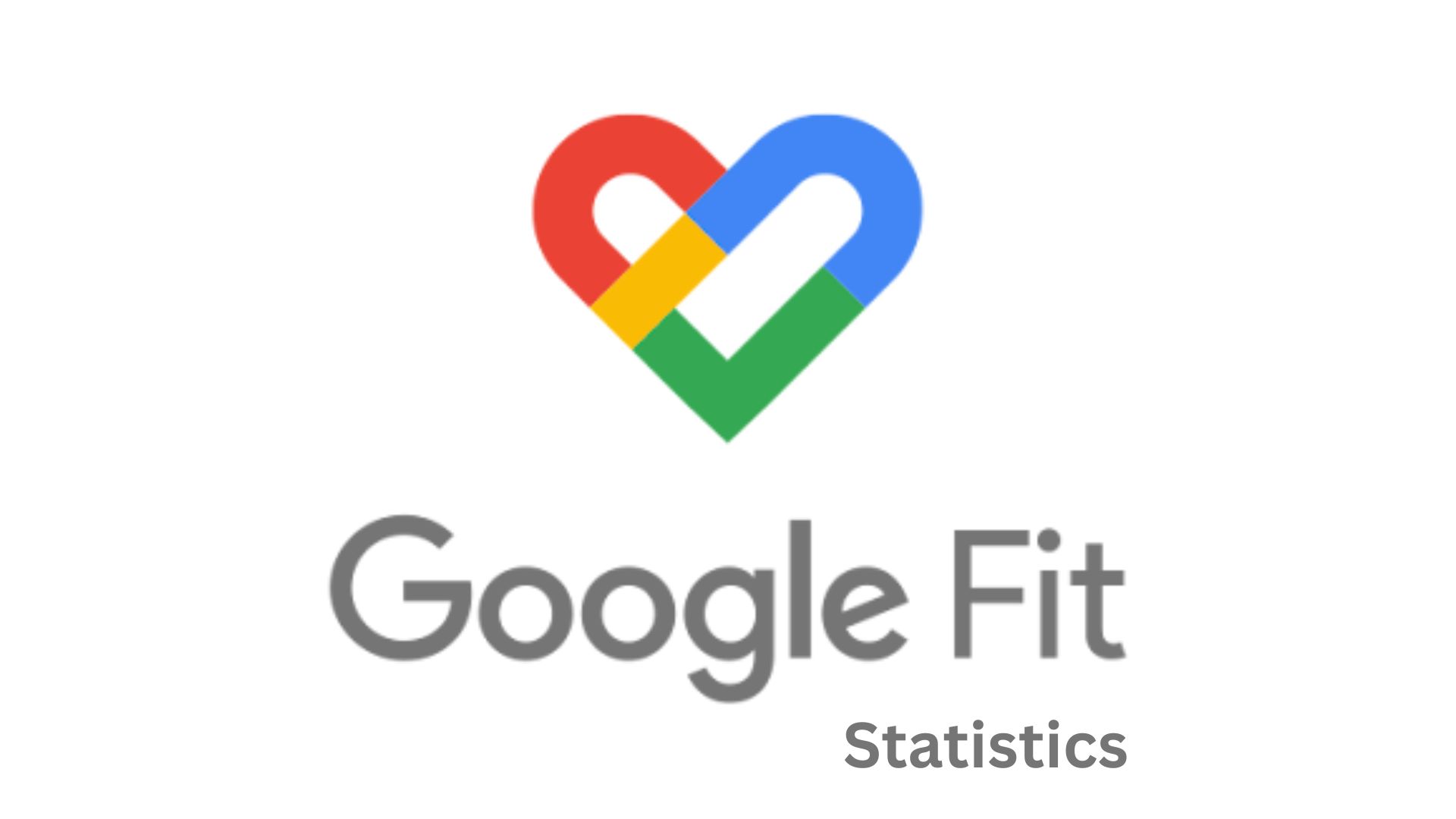
Table of Contents
Introduction
Google Fit Statistics: Google Fit, since its launch in 2014, formed the major platform of fitness and health for Google, enabling users to track several health metrics and pool data from several fitness apps and devices. In its continued evolution were added unique features like Heart Points, developed under the auspices of WHO and AHA, aimed at inducing physical activity.
Changes of much significance are due in 2024, marking a change in Google’s very own approach to health data-keeping. In this article, we will enclose the Google Fit statistics.
Evolution Of Google Fit
Google Fit was meant to unify health data since its inception and tightly integrate with various third-party apps and devices such as Lifesum, Nike+, Strava, and MyFitnessPal. Users could set goals and keep track of their daily progress for Heart Points and steps, keep track of workouts, and even automatically detect activities, all while having control of their data privacy and security. According to Google Fit statistics, the platform’s ability to aggregate data from different sources into one interface made it the darling of fitness buffs.
Editor’s Choice
- Google Fit partnered with WHO and AHA in the creation of Heart Points to promote physical activity.
- Google Fit statistics state that Google Fit integrates with Lifesum, Nike+, Strava, and MyFitnessPal, allowing users to track goals, monitor workouts, and detect activities automatically.
- The fitness app market is expected to generate revenues of 19.33 billion dollars in 2023, and by 2027, the revenues will rise to 33.04 billion dollars with a CAGR of 14.34%.
- Google Fit statistics show that User penetration is, however, expected to rise from 9.76% in 2023 to 12.21% in 2027.
- The average Revenue Per User in the fitness app market is expected to stand at US$25.78.
- The Google Fit app has surpassed 100 million installs on Android devices.
- 75% of Apple Watch purchasers in Q3 FY 2021 were first-time buyers, indicating Apple’s market expansion.
- According to Google Fit statistics, the global digital health market was valued at approximately US$175 billion in 2023 and is expected to reach US$660 billion by 2025, growing at a CAGR of 28.5%.
Health and Fitness App Market
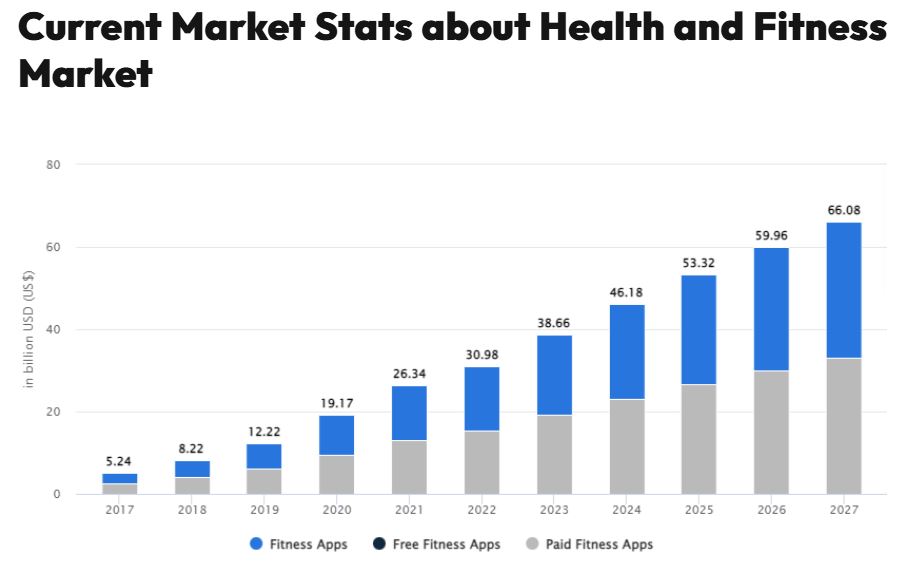
(Source: devtechnosys.com)
- The fitness apps market is estimated to generate US$19.33 billion as revenue in the year of 2023, which indicates a steep increase in demand for digital health solutions. It is to be expected that the market will grow significantly and will reach an expected value of US$33.04 billion by 2027.
- On the other hand, the revenue forecast suggests sustained and rapid growth of 14.34% compound annual growth rate (CAGR) from 2023 to 2027. This further indicates that penetration is also expected to increase in the coming years.
- The year 2023 will see a 9.76% penetration of users into fitness apps; by 2027, this will see an increased percentage of 12.21%. In all, the trend is great for the penetration of health and fitness tracking technologies into the modern world, where fitness concerns are growing among people. The average revenue per user is projected to be around US$25.78, thereby indicating a profit for the industry with people being willing to pay for premium feature access and subscriptions.
- Every inching toward acceptance of mobile fitness tracking applications is justified since a survey conducted in Q3 2022 in the United States revealed that 86% of respondents were aware of mobile apps for this purpose.
- This level of awareness denotes a near-mainstream presence for fitness tracking apps on health and wellness and suggests these applications now play a vital role in modern fitness regimes.
Google Fit’s Market Position
- According to Google Fit statistics, with over 100 million downloads on Android, Google Fit is becoming exceedingly popular and trusted by users.
- More than 75% of customers who purchased an Apple Watch in Q3 fiscal 2021 were first-time buyers, which shows how Apple is getting more and more into the personal health monitoring arena.
- Google Fit statistics state that the worldwide digital health market, including fitness tracking apps and wearables, is estimated to have been worth around US$175 billion in 2023 and is forecasted to be worth US$660 billion by 2025, at a CAGR of 28.5%.
- The market for Alphabet has greatly been strengthened with the acquisition of Fitbit, which has a huge array of fitness trackers to counter Apple, Amazon, Garmin, and Philips. Besides, the View module is designed so that all health and fitness data from various other apps and devices are gathered in one place and strengthens interaction.
- The further integration of Google Wear OS with Google Fit and other health apps is televised for increased adoption and engagement. Fossil’s smartwatch acquisition technology further boosts Google’s advancement in the fitness fabric wearables space.
- Google Fit statistics show that in the United States, Google Fit manages to get 12th place under the Health & Fitness category and 397 across all categories.
- It holds excellent positions in the Health & Fitness category in various countries, ranking 1st in Japan, India, and Taiwan; 2nd in the United Arab Emirates; and 3rd in Kuwait.
Leading Health And Fitness Apps By Revenue
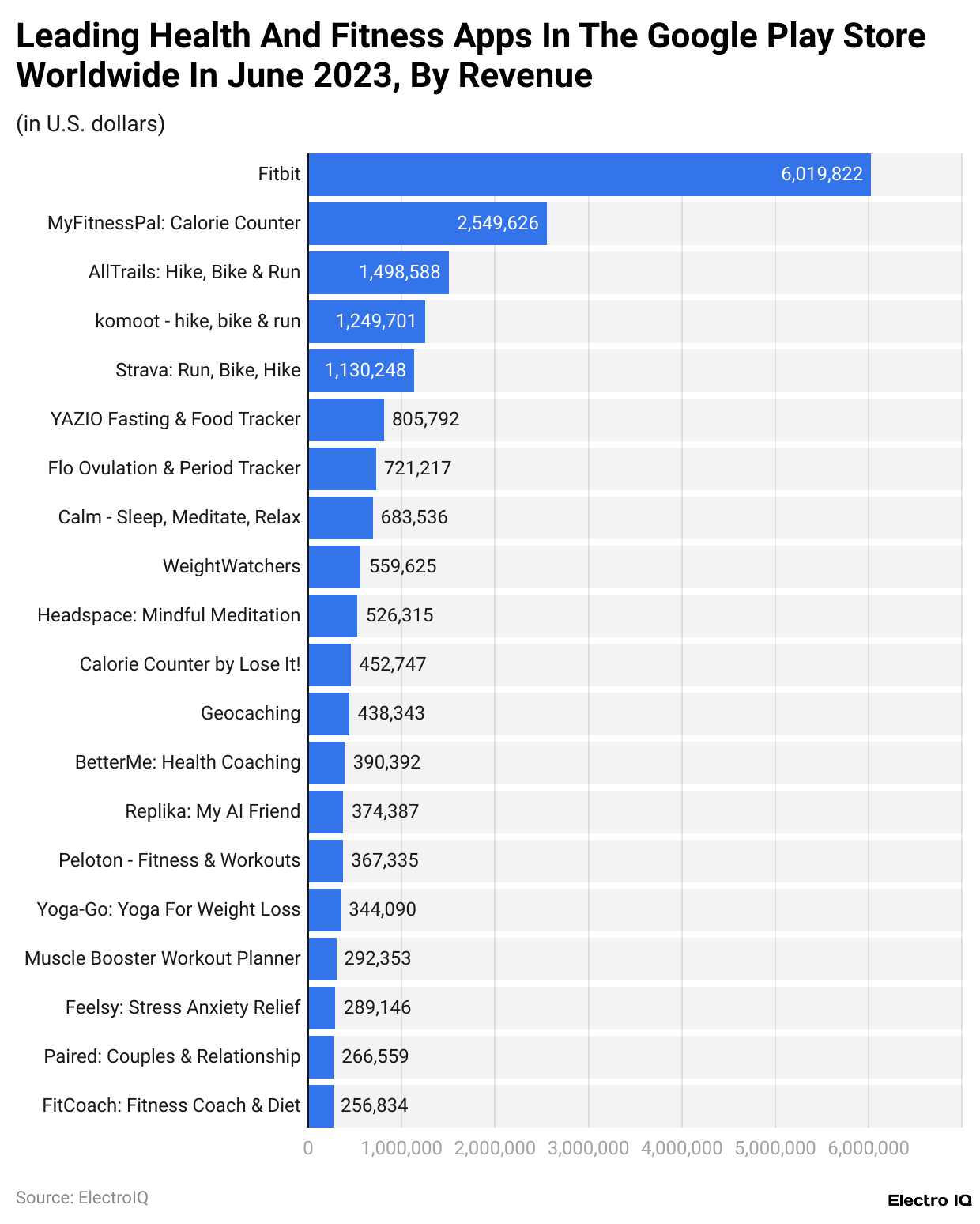
(Reference: coolest-gadgets.com)
- In June 2023, the most revenue-generating health and fitness application on Google Play Store secured US$6.01 million. MyFitnessPal: Calorie Counter lagged far behind at US$2.5 million, thus keeping its leadership in nutrition tracking.
- AllTrails: Hike, Bike, and Run earned US$1.49 million from hobby outdoor enthusiasts, while Komoot – Hike, Bike, and Run collected US$1.24 million. Strava: Run, Bike, and Hike collected US$1.13 million, all showing signs of an impressive athlete community utilizing these apps.
- Other earners include other apps. YAZIO Fasting and Food Tracker earned US$805,792, looking towards the rising demand for fasting. US$721,217 was recorded in Flo Ovulation and Period Tracker, reflecting the growing popularity of women’s health apps. Calm – Sleep, Meditate, Relax made US$683,536, reiterating the need for wellness at the mental level.
- Weight Watchers took in US$559,625, while Headspace raked in US$526,315, both showing sustained interest in organized health programs. Other such geeky apps included Peloton (US$367,335), yoga-go (US$344,090), and Muscle Booster (US$292,353).
- Stress relief and relationship apps, exemplified by Feelsy (US$289,146) and Paired (US$266,559), have also attracted audiences.
- These Goole Fit statistics figures point to an increase in the need for digital health solutions, covering almost every fitness, mental wellness, or personalised coaching.
Top Five Health Apps Like Google Fit
- Tracking health and fitness is something most people do today through health and fitness tracking apps.
- Out of all possible contenders for the app space, MyFitnessPal tops them all with more than 100 million downloads on Android and iOS. The app has a commendable user rating of 4.2 on account of its wide food database, tracking of calorie intake, and interoperability with numerous fitness devices. Touted to be a nutritional plan management app, it has earned its user’s approval as one of the most recommended apps for managing weight and planning diets.
- Another leading device is Strava, which has also been downloaded over 50 million times with an impressive rating of 4.5. It features GPS tracking, performance analysis, and social connectivity and is especially preferred by runners and cyclists. With Strava, one can even compare workouts against one another, set challenges, and compete with friends for being both a training scheme and a social networking platform for fitness enthusiasts.
- Again, just like this, there is Fitbit, an application that has recorded 50 million-plus downloads with a rating of 4.1. It works flawlessly with the Fitbit wearables to track users’ health statistics, such as immersion, beats per minute of the heart, and sleeping patterns.
- The application by Fitbit is quite a unique health partner as it combines healthy lifestyles with user activity data and includes feedback from daily routines to develop measurement standards. From that resource, it becomes popular among people who prefer meticulous attention to monitoring health activity with intelligent wearables.
- Notable is Noom, with over 10 million downloads, scoring well at 4.3. This app differs from other fitness apps because it delves into behavioral psychology and long-term lifestyle modification. Sustainable habits are then built through tailor-made coaching, meal tracking, and psychological insights using this app. Thus, it’s very helpful for people who are very much interested in weight loss and an overall life-improving structure called direction.
- Finally, Sworkit has also pulled in over 5 million downloads at a rating of 4.0, primarily known for its person’s exercise routine. Its custom workout plans provide all-around coverage for all fitness levels. By emphasizing exercise routines, Sworkit allows you to get strength training, yoga, and cardio at home instead of going to a gym on specific days.
- The five greatest health and fitness tracking apps have their niche in categories related to calorie logging, social fitness, and wearable integration personalized guidance. Each app, highly downloaded and rated, has proven valuable for users seeking to enhance their health.
Conclusion
The entire horizon of Google’s health-tracking services is changing with the upcoming planned disposal of Google Fit APIs and Health Connect. Google Fit statistics show a clear alignment of Google’s course for a more integrated and private health data platform. At the same time, developers and users alike are required to go through these transformations that would ensure continued access to a more holistic health and fitness tracking program.
Google Fit statistics include the opportunity for more engaging, complete, and smart health-data ecosystems, improved user experiences, and innovative health applications in the future.
FAQ.
Google Fit statistics state that Google Fit was launched in 2014 and will be a health and fitness activity-tracking platform that collates activity data across different apps and devices. The opportunity opened up Heart Points, which were developed in collaboration with WHO and AHA to motivate and shed some pounds. It has been and will continue to support third-party apps like Strava, MyFitnessPal, and Nike+, so it can serve as a hub for workout and day-to-day activity tracking.
Google Fit is in a major change because Google has been focusing on shifting towards Health Connect. This is the latest and the unified health data platform. This would mean that developers require changing to Health Connect, as much as the app is available, by June 30, 2025.
The global fitness app market, which will generate revenues of US$19.33 billion in 2023, will reach US$33.04 billion by 2027, growing at a compound annual growth rate of 14.34%. User penetration will reach the following levels: 2023- 9.76% and 2027- 12.21%, meaning better consumer engagement with the growing health and fitness technology interest.
As per Google Fit statistics, one of the top health and fitness apps is MyFitnessPal (100M+ downloads)-Which is known for a great database of foods and calorie counting. Strava (50M+ downloads)-A social GPS site for runners and cyclists. Fitbit (50M+ downloads)-couples with sweat and sleep to pretty much traffic for its users. Noom (10M+ downloads)- Weight management Noom uses behavioral psychology for its chances for success. Sworkit (over 5 million downloads)- Allows the development of a custom home workout program.
The stars above the rest of the health and fitness apps, especially in Google Play, in June 2023, for revenue include MyFitnessPal: US$2.5 million Calorie Counter, AllTrails: Hike, Bike, Run-US$1.49 million, Komoot-hike, Bike, Run-US$1.24 million, Strava: Run, Bike, Hike-US$1.13 million, YAZIO Fasting & Food Tracker-805,792. This is just part of the evidence of the increased global demand for fitness and wellness tracking solutions.

Maitrayee Dey has a background in Electrical Engineering and has worked in various technical roles before transitioning to writing. Specializing in technology and Artificial Intelligence, she has served as an Academic Research Analyst and Freelance Writer, particularly focusing on education and healthcare in Australia. Maitrayee's lifelong passions for writing and painting led her to pursue a full-time writing career. She is also the creator of a cooking YouTube channel, where she shares her culinary adventures. At Smartphone Thoughts, Maitrayee brings her expertise in technology to provide in-depth smartphone reviews and app-related statistics, making complex topics easy to understand for all readers.

